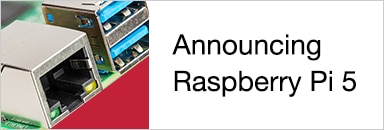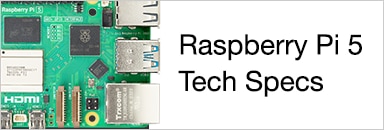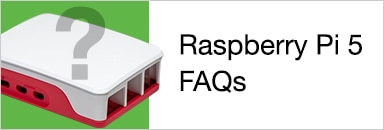Music has always been driven forward in part by the technology used to make it. The piano combined the best features of the harpsichord and clavichord to help concert musicians; the electric guitar made performing and recording different forms of blues, jazz, and rock music possible; and electronic drum machines both facilitated songwriting and spawned entire genres of music in themselves. Toby Hendricks, an electronic musician who records and performs as otem rellik, became dissatisfied with the iPad he used in live performance, and decided to build his own device using Raspberry Pi.
Q: What was the origin of the Looper project? You mention in the video that it replaced your iPad for live performances, were there deficiencies in the iPad, did you want features it didn’t offer, and so on?
Toby: The origin dates back about three years, when I first started learning Pure Data. At that time I was using an iPad for live shows, and it seemed like nearly every year when iOS got updated some of the apps I was using would break. This trend has gotten better, but I still find it a bit unnerving to use iOS live. I sort of got sick of not having a reliable setup, so I started creating Pure Data patches for an app called MobMuPlat. I fell in love with Pd (Pure Data), and eventually replaced all the apps I was using with one single Pd patch loaded into MobMuPlat. That looping/drum patch became pretty robust over the course of about three years, and then I decided to attempt to turn it into a complete standalone hardware unit.
Q: I make electronic music myself, and I always find when I get a new piece of hardware or software that there are features I didn’t expect to be using or that I didn’t know were there that I turn out to love. Despite the fact that you designed the Pi Looper, have you found yourself using it in ways you didn’t expect?
Toby: Definitely. I’m always finding ways to improve my live performances with it, mostly with the effects. I’ve become pretty proficient in playing the effects section almost like its own instrument; the delay feedback can be infinite, so creating a short delay and then playing with the delay time mixed with the other effects can really create some cool sounds and textures. Also, if you already have a loop going, the delay time is synced with the tempo of the song, so you can get some really cool rhythmic stuff going on.
Q: Why did you choose the Raspberry Pi for this project? What advantages does it offer?
Toby: I chose Raspberry Pi because I knew it could run Pure Data; I really had no other knowledge of Raspberry Pi. The form factor also works great, because I wanted to have all the components inside the box. This was my first Pi project.
Q: As you were putting together the Looper, did you run into any notable technical problems, and how did you solve them?
Toby: I had tons! It took me about three months to figure everything out. One of the main milestones was getting Pd to talk to all the controls, which are all connected to a teensy 3.6. I had absolutely no idea how I was going to make that work when I started. I eventually learned about the comport object, which is an external for Pd which allows Pd to send and receive serial data. Originally, I was planning on just sending MIDI back and forth from the Pi to the teensy, but then realized I needed to also transmit song names back and forth. Learning how to package serial data ended up being many hours of frustration, but I finally got it working with some code I found on the Arduino forum. I also had to make Pd create and delete directories to store the songs; the shell Pd external eventually saved the day on that one. There were way more issues I had to solve, but those were some of the ones on which I remember almost giving up the whole project.
Q: In the electronic music world there seems to be to be a movement of people wanting to avoid staring at their computer screens while they write, and devices like Native Instruments’ Maschine, Ableton’s Push, and new models of the classic AKAI MPC are trying to give electronic musicians the tools to write without needing their mouse and keyboard to manipulate their DAWs. Do you feel that your Looper fits in that tradition, or is it more of a device for live performance? Perhaps it’s useful in both areas?
Toby: I think it fits in both areas. It was definitely built for my live shows, but I often jam out on the couch with it. All the internal instruments were actually an afterthought; originally it was just going to have drum samples. I have yet to fully create a song on it that ended up being something I liked enough to import into my DAW (Digital Audio Workstation) to work on further, but I’m guessing that will eventually happen. I really like when an electronic band plays a show with no computer, or at least a controller that allows them to not even look at the computer. Laptops on stage are fine, but sometimes I feel like the performer could just be checking their email up there and I wouldn’t know the difference. Seeing someone on a piece of hardware really cranking on knobs and pounding buttons (even if it’s just a controller) is so much more interesting to watch.
Q: I very much agree on that! So do you have any plans for future music tech projects? An update to the Looper, perhaps, or a device that fills a different need you have in your writing or performing?
Toby: I’m pretty much always working on a new project. I’ve been building projects more than making music lately. I’ve already built a new MIDI controller that I’m going to shoot a video for eventually. It’s a drum pad / sequencer thing (kind of like this), but it uses force sensitive resistors for the note pads. I actually learned how to cast my own urethane for the pads, which was probably one of the most unnecessary steps I’ve ever taken for a project. I also just purchased a CNC machine and am currently working on a new Raspberry Pi project that will be very similar to this, but the sound engine will be in Pure Data and the touch screens will be much larger. As for the Looper, I was just updating the code yesterday to add a pickup function to the volume knobs for saved songs. The Looper is eventually going to be completely rebuilt with force sensitive resistors for the pads, but that may be some time from now.
See more of Toby's projects on Youtube, and check out more Raspberry Pi projects on element14 here!











Top Comments